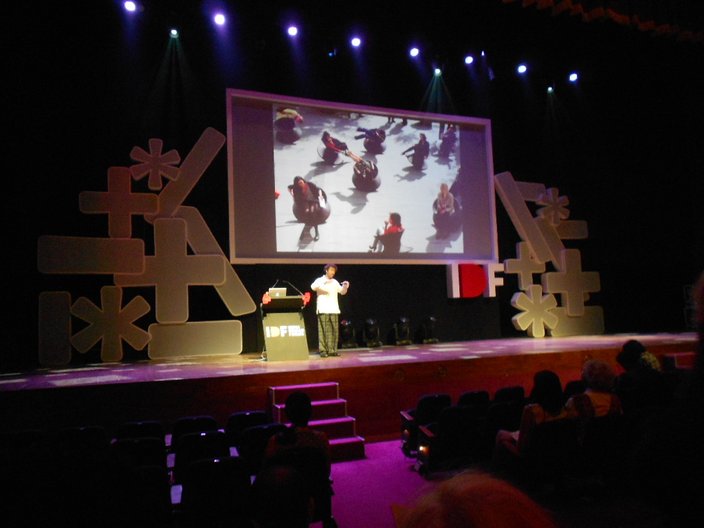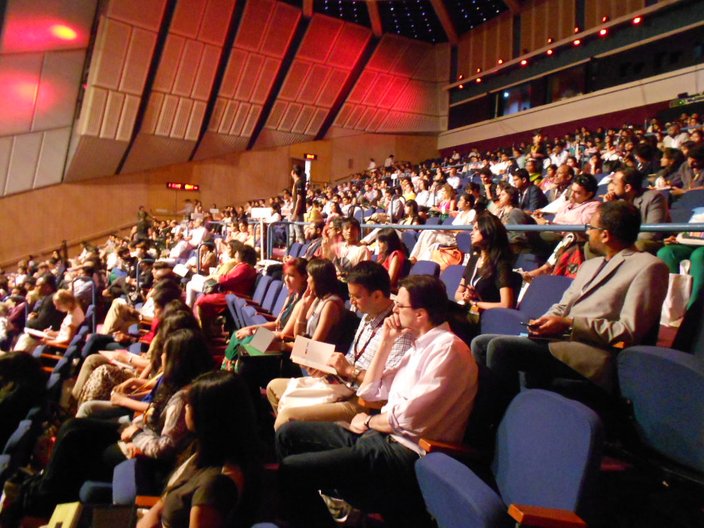18 March 2013
by Vicky Richardson
I'd flown to Mumbai, or Bombay as Indians all seem to call the city, for India Design Forum. Set up by the art patron Rajshree Pathy, IDF is in its second year having begun in Delhi in March 2012. The theme for this year was 'Design Matters'.
I was there to chair a session titled 'Dream a Design Museum', with a panel consisting of Deyan Sudjic, Abraham Thomas and Vikas Satwalekar. More about that later.
Arriving late at night and heading straight to the conference venue at the National Centre for Performing Arts the following morning, there was little time to see the city, apart from the stunning view across the Bay and Marine Drive, lined with Banyan trees.
After a welcome by Pathy in which she made a plea for 'design thinking' in Indian commerce and business, the opening speech was given by Thomas Heatherwick. It's ages since I've heard him speak, and his presentation was warm and funny. It went down extremely well with the audience of about 600 Indian designers and students, who spontaneously broke into applause when he described the Olympic Cauldron. As I was to learn, Indian audiences like to express themselves.
Talks by a real mixture of star designers including Renny Ramakers, Anoushka Hempel, Nipa Doshi and Indian fashion designer Sabyasachi Mukherjee, continued all day. The best thing for me was hearing the questions and points raised by the audience. Common concerns seemed to be: defining an Indian identity to design, preserving India's craft heritage, getting design taken seriously by government and business, and the pluralism and multi-cultural nature of India.
On Day two, it was the British Council session: Dream a Design Museum, which had been put together by our India design expert, Aanchal Sodhani. In the run up to IDF Aanchal had organised workshops with exhibition design students from the National Institute of Design and the Shrishti school of Art, to consider what a design museum might look like in India. The ideas generated, including a proposal by NID student Sharwari Dorge for a street museum, made a good start for the session. Our panel included graphic designer Vikas Satwalekar who had been Director of NID for more than a decade. It also turned out that he had designed an exhibition about India at the Commonwealth Institute in the 1980s, the new home of the London Design Museum.
The highlight of day two for me was a talk on the 'Kinetic City' by architect Rahul Mehrotra, Chair of Urban Planning at Harvard. It was a brilliant talk in which Mehrotra rattled through an explanation of urban development, and the struggle of Indian designers and architects dealing with a gamut of change, before going on to present his own work. He described Mumbai as an 'elastic city', where there are fives stages of squatting during which space changes its use and is taken over by people. He talked about the need for an 'incremental architecture', using the parallel of sachets of shampoo which are sold on the streets of the city to people who cannot afford a whole bottle. He finished the talk by addressing a point that many people had raised during IDF, that of Indian identity: 'We don't find our identity, we construct it', he said.
At the end of the talk, there was five minutes of applause and a standing ovation. Not even Christian Louboutin, the design celebrity of the day, got that sort of reception.


